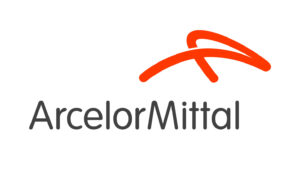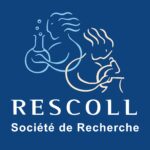Project
Having something radically more sustainable needs imagination and ALMA is creating the future of mobility through innovative, and sustainable hybrid material solutions. ALMA will decrease the environmental impacts of electric vehicles by reducing the weight of the structure, saving materials and energy, thereby reducing CO2 emissions.
Reduce, re-use, recycle. ALMA is transforming the automotive sector from a linear to circular model considering recyclability early in the design phase and concocting creative end-of-life solutions at an affordable cost.
Partners
ALMA believes in a product that is light, agile, and strong. ALMA is thinking out-of-the-box to change mobility. Its tangible results will change the industry on a holistic level. Its partners have different systems’ thinking approaches that are integrated into one dynamic project.
 CTAG – Automotive Technology Centre of Galicia
CTAG – Automotive Technology Centre of Galicia
CTAG is a Spanish private, independent, and non-profit technology center devoted to support the automotive industry in its research, development, and innovation needs. CTAG is the project coordinator of the ALMA project.
Website: » www.ctag.com

Fraunhofer – Gesellschaft für angewandte Forschung
The Fraunhofer-Gesellschaft is the leading organization for applied research in Europe. The Fraunhofer Institute for Industrial Mathematics (ITWM) has gained a high reputation in mathematical research for industrial and commercial applications, especially mathematical modelling, and computer simulation.
Website: » www.itwm.fraunhofer.de

Ford-Werke GmbH
Automotive End-User, CAE analysis. As part of the Ford-Werke GmbH, the team of Ford Research & Advanced Engineering Europe is developing the next generation, highly electrified powertrain portfolio. Further research projects are focused on new vehicle concepts as well as new materials and production processes such as additive manufacturing. Safety, comfort and wellbeing aspects are being addressed in the areas of new chassis technologies, advanced driver assistance systems, connectivity and smart mobility solutions.
Website: » www.ford.com, » www.fordmedia.eu, » www.media.ford.com
Twitter: » www.twitter.com/FordEu
Youtube: » www.youtube.com/fordofeurope

ArcelorMittal Maizieres Research SA
ArcelorMittal Maizières Research (AMMR) is an ArcelorMittal research center devoted to the development of advanced steels for automotive applications.
Website: » www.arcelormittal.com

Batz S. Coop.
BATZ, a first major automotive supplier (TIER1), is a cooperative which belongs to MONDRAGON, the largest cooperative industrial Group in the world.
Website: » www.batz.com

Rescoll
RESCOLL is an innovative SME, best defined as a research company for materials, specialized in composites and polymers. RESCOLL’s activities are industrial research and development of innovative products and processes.
Website: » www.rescoll.fr

Innerspec Technologies Europe S.L.
Innerspec Technologies is the world leader in the development of High-Power Ultrasonic instrumentation for NDT applications. The mission is to provide non-destructive inspection solutions that provide a superior return on investment.
Website: » www.innerspec.com

Netherlands Organisation for Applied Scientific Research TNO
TNO is an independent research organisation. and connects people and knowledge to create innovations that boost the competitive strength of industry and the well-being of society in a sustainable way. This is our mission and it is what drives us, the over 3,400 TNO professionals, in our work every day. We work in collaboration with partners and focus on nine domains. One of those domains is The Circular Economy and the Environment: ‘Directing and accelerating sustainability’. TNO is WP-leader of WP1 (Circular Approach: LCA and LCC) and WP7 (Effective solutions for recycling and recovery) and provides the Circular Economy Manager.
Websites:
» TNO – innovation for life | TNO
» Circular plastics: the solution for plastic waste | TNO
Social media channels:
» TNO on LinkedIn
» TNO on Facebook
» TNO on YouTube
» TNO on Instagram
TNO press on Twitter: » https://twitter.com/TNO_pers
TNO news on Twitter: » https://twitter.com/TNO_nieuws
TNO research on Twitter: » https://twitter.com/TNO_Research

International Solid Waste Association (ISWA)
The International Solid Waste Association is an international network of waste professionals and experts from around the world whose mission is “to promote and develop sustainable and professional waste management worldwide and the transition to a circular economy.” ISWA achieves this by bringing together waste experts from around the world to network, create best practices, produce industry reports, and publish its own scientific journal, Waste Management and Research.
Website: » www.iswa.org
Facebook: » https://www.facebook.com/ISWA.org/
Twitter: » https://twitter.com/ISWA_org
LinkedIn: » https://www.linkedin.com/company/iswa-international-solid-waste-association/
Our Steps
Changing mobility for the better is a key factor in conserving the environment. ALMA is the catalyst in the automotive market to create a more affordable and sustainable vehicle for all. This is our approach.
Putting sustainability by first assessing environmental impacts and costs using a circular approach.
The project will begin with an assessment of the environmental aspects of the product from a circular perspective (Life Cycle Assessment-LCA) and accompanying cost considerations (Life Cycle Cost-LCC) that will serve as the guiding principle of the project.
Refining new, innovative material technologies.
On the technical side, the project will deal with the finetuning of two existing material families suited for lightweight structural applications in road transport.
Design the most promising vehicle multi-material structure by presenting an affordable weight reduction with highest possible performance.
The vehicle architecture and design will be evolved using eco-design principles towards a novel concept of a fully electric vehicle based on innovative multi-material structure culminating into reduced mass and lower environmental impact.
Develop new technologies and manufacturing methods to create efficient end-of-life solutions.
The manufacturing process involved in the production of the novel components/subsystems will be optimized to increase reliability and structural integrity, including the development on innovative reversible assembly methods that will enable the efficient separation of materials at the end of life that is both cost-effective and sustainable.
Putting sustainability by first assessing environmental impacts and costs using a circular approach.
The project will begin with an assessment of the environmental aspects of the product from a circular perspective (Life Cycle Assessment-LCA) and accompanying cost considerations (Life Cycle Cost-LCC) that will serve as the guiding principle of the project.
Refining new, innovative material technologies.
On the technical side, the project will deal with the finetuning of two existing material families suited for lightweight structural applications in road transport.
Design the most promising vehicle multi-material structure by presenting an affordable weight reduction with highest possible performance.
The vehicle architecture and design will be evolved using eco-design principles towards a novel concept of a fully electric vehicle based on innovative multi-material structure culminating into reduced mass and lower environmental impact.
Verification of the structural integrity, reliability, and long-life service of the auto body structure.
The developments in the previous steps will be supported by verifying the structural integrity, reliability, and long-life service of the multi-material body structure.
Methodical inspection to enable repair and re-use.
An in-service inspection and monitoring system will be developed and tested in order to extend the options at the end-of-life to include the possibility to repair and reuse the vehicle structure.
Develop new technologies and manufacturing methods to create efficient end-of-life solutions.
The manufacturing process involved in the production of the novel components/subsystems will be optimized to increase reliability and structural integrity, including the development on innovative reversible assembly methods that will enable the efficient separation of materials at the end-of-life that is both cost-effective and sustainable.
Verification of the structural integrity, reliability, and long-life service of the auto body structure.
The developments in the previous steps will be supported by verifying the structural integrity, reliability, and long-life service of the multi-material body structure.
Methodical inspection to enable repair and re-use.
An in-service inspection and monitoring system will be developed and tested in order to extend the options at the end-of-life to include the possibility to repair and reuse the vehicle structure.
Finding solutions for recycling and recovery.
In compliance with the circular approach, possible solutions for recycling and recovery of the materials used will be assessed, identifying the most sustainable and economical routs for end-of-life recycling of the materials.
Circular demonstration & model-based characterization.
Eventually a full virtual verification of the engineering approach and demonstration of the circular use in real deployment conditions will be performed evidencing that the project proposed strategy has reached an integrated and mature level.
Ensuring potential market uptake and raising awareness.
The team will conduct an economic and technology transfer assessment for an efficient and effective market uptake. The deliverables will be communicated and disseminated effectively to raise awareness and promote public awareness about the circular economy and its applicability in the project. Dissemination activities gives ALMA the opportunity to engage with other stakeholders for a greater result.
A well-organized, agile team.
All these activities and partners will be efficiently coordinated and managed including efficient progress reporting, continuous updates to the work plan, data and risk management, and interaction with the European Commission.
Finding solutions for recycling and recovery.
In compliance with the circular approach, possible solutions for recycling and recovery of the materials used will be assessed, identifying the most sustainable and economical routes for end-of-life recycling of the materials.
Circular demonstration & model-based characterization.
Eventually a full virtual verification of the engineering approach and demonstration of the circular use in real deployment conditions will be performed evidencing that the project proposed strategy has reached an integrated and mature level.
Ensuring potential market uptake and raising awareness.
The team will conduct an economic and technology transfer assessment for an efficient and effective market uptake. The deliverables will be communicated and disseminated effectively to raise awareness and promote public awareness about the circular economy and its applicability in the project. Dissemination activities gives ALMA the opportunity to engage with other stakeholders for a greater result.
A well-organized, agile team.
All these activities and partners will be efficiently coordinated and managed, including efficient progress reporting, continuous updates to the work plan, data and risk management, and interaction with the European Commission.

